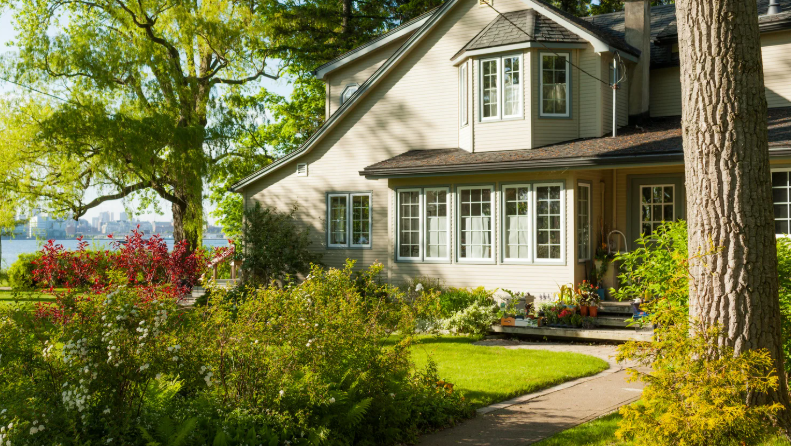
Summer is a wonderful time for Our comprehensive Toronto gardening zone guide helps you navigate the complex world of plant hardiness ratings and regional climate variations. This knowledge allows you to select plants that will flourish in your specific location rather than struggle against unsuitable conditions.
Understanding Ontario’s Plant Hardiness System
Canada uses a unique plant hardiness zone system that differs from the American USDA zones many gardeners encounter online. The Canadian system accounts for factors like winter length, summer heat, and precipitation patterns that affect plant survival. These zones range from 0a (coldest) to 9b (warmest) across the country.
Ontario spans several hardiness zones, with the southern regions generally experiencing milder conditions than northern areas. Most of the Greater Toronto Area falls within zones 6a to 7a, though specific locations can vary significantly. Urban heat islands and proximity to large bodies of water create notable variations within relatively small geographic areas.
Microclimates Within the GTA Region
Local environmental factors create microclimates that can differ dramatically from the broader regional zone designation. Areas near Lake Ontario typically experience moderated temperatures due to the water’s thermal mass effect. These locations often have later spring frosts and extended growing seasons compared to inland areas.
Urban environments generate their own unique growing conditions through the heat island effect. Concrete and asphalt absorb and radiate heat, creating warmer nighttime temperatures that can extend the growing season. Building wind patterns and reflected light also influence plant growth in city gardens.
Elevation changes, even small ones, can create significant temperature differences within short distances. Low-lying areas collect cold air and may experience frost when nearby higher ground remains frost-free. Understanding these patterns helps you position tender plants in protected locations.
Seasonal Timing for Ontario Gardens
Spring planting schedules depend heavily on your specific location within Ontario’s diverse climate zones. Frost dates vary considerably across the province, with some areas experiencing their last spring frost in early April while others wait until late May. Keeping detailed records of actual frost dates in your garden provides more accurate guidance than general zone maps.
Summer growing seasons also vary in length and intensity across different regions. Northern Ontario gardens may have only 90-120 frost-free days, while southern areas enjoy 150-180 days of growing weather. This difference affects which crops can mature successfully and influences variety selection for vegetables and annual flowers.
Fall planning requires understanding when your area typically experiences its first killing frost. This date determines when to plant fall vegetables, when to harvest tender crops, and when to begin winter protection measures. Climate change has shifted many of these traditional timing patterns in recent years.
Selecting Plants for Your Specific Zone
Plant tags and catalog descriptions use hardiness ratings to indicate temperature tolerance ranges. Always select plants rated for at least one zone colder than your area to account for unusual weather events. This safety margin helps protect your investment during unexpectedly harsh winters.
Consider both minimum winter temperatures and summer heat tolerance when making plant selections. Some plants that survive Ontario winters may struggle with hot, humid summer conditions. Mediterranean herbs and alpine plants often fall into this category, requiring special placement or care during summer months.
Successful plant choices for Ontario gardens include:
- Native species adapted to local conditions
- Cold-hardy perennials that return reliably each year
- Vegetables with appropriate days-to-maturity ratings
- Trees and shrubs rated for your specific zone
- Annual flowers that thrive in your summer conditions
Working with Challenging Microclimates
Problem areas in gardens often require creative solutions rather than plant changes. Windy locations benefit from windbreak plantings or protective structures that reduce plant stress. Wet spots can be improved with drainage solutions or planted with moisture-loving species that thrive in these conditions.
Extremely hot, dry locations need plants that tolerate drought and heat stress. Mulching helps retain soil moisture and moderate soil temperatures in these challenging spots. Shade from buildings or trees creates cooler microclimates that allow you to grow plants typically suited to cooler zones.
Extending Your Growing Season
Season extension techniques allow gardeners to push beyond their natural climate limitations. Cold frames, row covers, and greenhouse structures protect plants from temperature extremes while maintaining good growing conditions. These tools are particularly valuable for vegetable gardeners wanting to harvest fresh produce longer.
Thermal mass objects like water barrels or stone walls store heat during warm days and release it during cool nights. Strategic placement of these elements can create protected microclimates around tender plants. Dark-colored mulches and south-facing locations also help capture and retain solar energy.
Container gardening offers flexibility for managing challenging climate conditions. Pots can be moved to protected locations during extreme weather or repositioned to take advantage of seasonal sun patterns. This approach works particularly well for tender herbs, tropical plants, and plants that need specific soil conditions.
Understanding your local growing conditions empowers you to make informed decisions about plant selection, timing, and garden management. Success comes from working with your environment rather than fighting against it, leading to healthier plants and more enjoyable gardening experiences.
